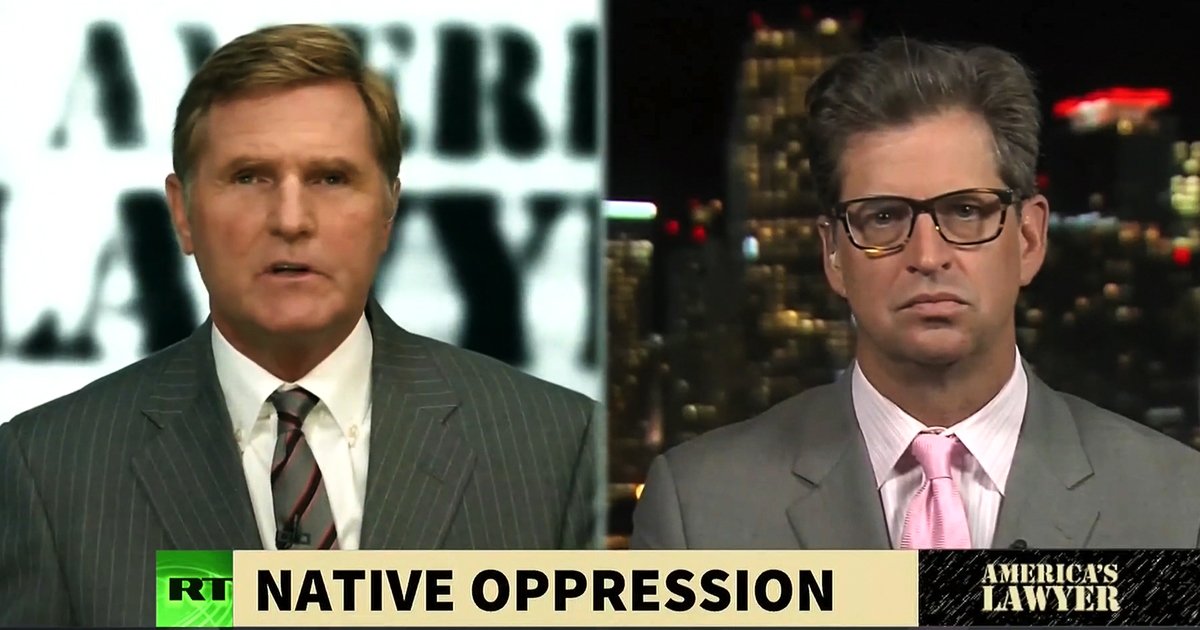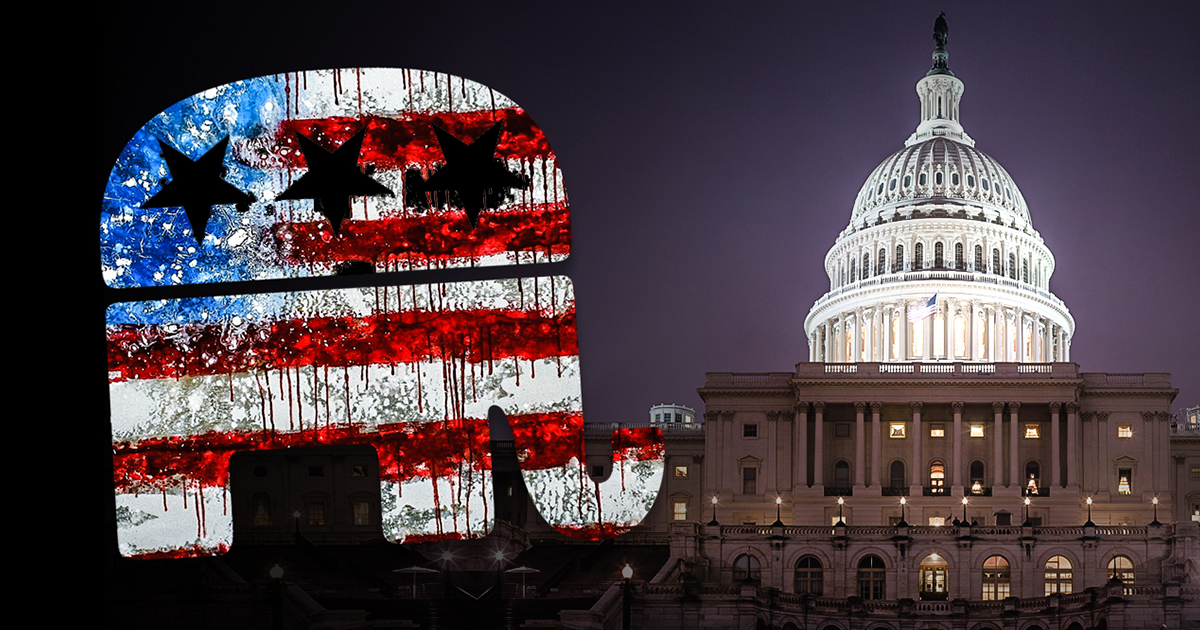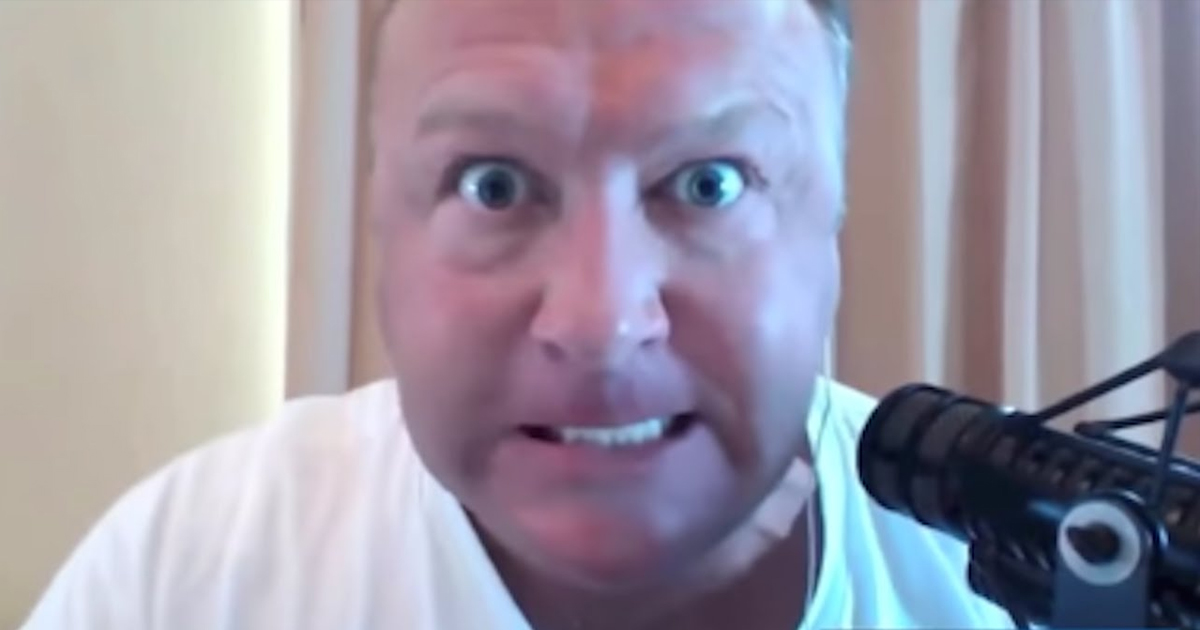To learn more about this topic, visit AL.Law
Via America’s Lawyer: Mike Papantonio talks about the oppression of Native Americans in the United States with attorney, Peter Mougey.
Transcript of the above video:
Papantonio: Most people in the United States tend to believe that we’re ahead of the rest of the world when it comes to the rights of our citizens. We criticize and publicly admonish other countries when they violate the civil rights of their people, but we often turn a blind eye to the abuses carried out in our own soil. There is no shortage of oppressed groups here in the U.S. African Americans, immigrants, women, the poor – the list is seemingly endless of different groups that have been attacked by the government, the media, and law enforcement agencies. But one group that is often overlooked in these discussions is the oppression of the Native American population.
Since the very first days of our Republic, Native Americans have been pushed aside – quite literally – to make way for wealthy white landowners. We stripped them of the land they lived in and farmed and hunted on for centuries so that we could create new settlements and expand our territories. And in the centuries since that time, things haven’t gotten much better.
In the 1830’s, Congress passed the Indian Removal Act that forced Native Americans from their homelands in the South to areas in the western part of the country. It was this piece of legislation that led to the infamous Trail of Tears, where Native Americans were forced to migrate from the American south to the west, where thousands of people died along the way from exposure, disease, and malnourishment. And the reason those politicians did this was because gold had been discovered on Native land, and the government wanted to get their hands on it.
Fast-forward almost 200 years and we still see similar scenarios playing out with Native Americans and land rights in the Dakota Access Pipeline saga. When the Standing Rock Sioux attempted to halt the dangerous and unnecessary construction of the Dakota Access Pipeline through their sacred lands, they were met by federal agents who did everything in their power to push the protesting Native Americans off the site. The land rights of the Standing Rock Sioux were completely ignored so that an oil company could strike their gold of today.
On the issue of healthcare, Native Americans have consistently been treated like second-class citizens by the federal government. The Indian Health Service is a branch of the federal government that helps provide healthcare services for Native American citizens. But they are so under-funded that they are almost useless to address the growing medical needs of the Native population. According to the most recent numbers available, the Indian Health Service provides a little over two thousand dollars per Native American for their healthcare each year, while the average cost of healthcare per US citizen is closer to eight thousand dollars per year.
Not only is the funding inadequate, but the healthcare facilities that will actually accept this funding to treat Native Americans are few and far between, leaving that population with virtually no healthcare options if they don’t live near a facility. So it’s no surprise that the Native American population in the United States has been hit probably harder than any other group by the opioid catastrophe.
Joining me now to talk about this is attorney Peter Mougey. Peter, let’s start with the opioid issue. Why are abuse rates so high with Native Americans? Why are we seeing this huge increase in that population?
Mougey: Well, the abuse rates are high across America in general, but on the Indian reservations, the Native Americans are twice as high as any person in any other community. Reservations are twice as high. Quite frankly, at the end of the day, you have to boil it down to the lack of healthcare. I mean, these Indian reservations, the Native Americans have been forced, over generations, to live hundreds of miles in the middle of nowhere, where they have almost no access to healthcare. So scripts and opiates have become an easy, quick solution on the reservations to fix problems that have been building for generations.
Papantonio: Well, we always see the Feds doing something to make life worse for Native Americans, but has the government played any role in furthering this epidemic within the Native population, or have they even attempted to fix the problem that’s obvious to anybody who simply makes drive across a reservation?
Mougey: It is. Quite frankly, to really understand this, one has to go out and look at where these Native Americans live on these reservations. They’re literally out in the middle of nowhere. You touched on it in your opening, about the federal government and the lack of funding for healthcare, $2,000 per Native American that lives on reservations when the true cost is more like $8,000. Think about the complete disparity that a Native American as opposed to someone who lives in an urban area has to healthcare. So if you’re in an urban area, you’re close. It’s easily accessible. It could even be right down the street.
On the other hand, on these Native American reservations, we have put them hundreds of miles out in the middle of nowhere with almost no access to healthcare, and we’ve said just, “Good luck.” You have to look at the history of how the Native Americans ended up on these reservations as we forced them out of their lands, and through the generations, this has continued. For example, Native American children have been removed from their homes at a time 16 times more often than white Americans and European Americans. We’ve removed them from their homes. We’ve put them into other homes out in suburban or urban areas, off the reservation, stripped them of their identities. Then, oftentimes, at 18, dumped them back, driven by the federal government, over hundreds of years, that has decimated the foundation of these communities, stripped them of their identities, stripped them of their place to live, and then put them in the middle of nowhere with no access to healthcare, and we wonder why there’s a problem.
Papantonio: Well, Peter, we know this. Just on the opioid issue, we know that the companies, the distributors, they followed despair. That’s the best way I could put it. If you look at all the places that the opioid catastrophe has taken place, the industry followed areas where there was population despair. Lack of jobs, lack of income, lack of possibilities. So the Indian Nation across the country has been really a demographic target for the opioid industry. I think what’s more important to me is why in the heck … Why hasn’t corporate media reported on this? Why hasn’t the IHS, why haven’t they taken some leadership in getting ahead of this problem that seems to be so serious within the Native American population? What is your take?
Mougey: Well, let’s address the corporate media first. Corporate media spends hundreds of millions of dollars a year advertising on our TV stations and mainline media. When it comes to asking corporate or mainstream media to report on these issues, nobody wants to touch it, because if they do, they might be cutting off at the knees the sacrosanct funding from the pharmaceutical companies that pay for the advertising, whether it be TV or newspapers or online. As a result, this has all been kind of hush-hush that these companies have targeted the lowest end on the socioeconomic ladder and marketed. Anybody with a Medicaid card is where they focus their attention on. At the end of the day, you’re not seeing this story in the mainstream press until just very recently. No one’s heard this story for the last six, seven, eight … Until the last six, seven, eight months. Quite frankly, that’s been driven by a grassroots effort that has gotten the story out front and, quite frankly, in the trial lawyers that are acting as private attorney generals filing cases across the country, getting this issue out in front. Now, you’re seeing people talk about it.
Papantonio: The same type of lawsuits, for example, you and Paul Ferrell and many lawyers—I was one of the lawyers included in that lawsuit—filed in Ohio, for example, you filed a RICO claim. You filed many types of claims against both the manufacturers and the distributors. Those same types of cases can be filed on behalf of the American Indians. Of that population, will they be included in cases like that as you go forward?
Mougey: Yes. The Native Americans are pursuing their claims very similar to any city or municipality would. The Indian Nation, the reservations are sovereign nations, and they have the right and the ability to bring a claim on behalf of the damages they’ve caused and incurred and the cost to fix the mess, the cost to clean up the problem. Quite frankly, the cleanest and the biggest problem causers are the distributors, which were charged by the federal government when they created the Controlled Substance Act in 1970 that it was completely foreseeable that there was going to be diversion because of the addictive nature of the opiates. They knew there were going to be problems. They knew there were going to be doctors writing scripts and pill mills. They knew there were going to be people that abused these, so they put the distributors in place to act as a gate keeper to control the narcotics, the Schedule II drugs, from manufacturers to the pharmacies.
Not only did they not do their job, but they built their entire business model around focusing on these areas and the people that were most at risk. Not only did they not report it to the DEA, as they were charged to under the CEA, they did absolutely nothing and shipped and made hundreds of millions and billions of dollars on an annual basis. The McKesson CEO, which was one of the targets in the defendants … McKesson was one of the named defendants. McKesson’s CEO made $160 million last year in bonuses and compensation for delivering Schedule II narcotics in a completely … Just devoid of all of their responsibilities to identify problem areas or diversion.
Papantonio: Peter, in this discussion, we’re focusing on the Indian Nation because they have been most effected. I mean, if you look at the numbers, they are startling. What we’re finding from all the literature, everything we’re seeing, is that after the opioids come in and they addict so many of these people, they’re absolutely living in total despair. You don’t understand that until you drive across a reservation. After that happens, then comes the tail of the problem, which is the black tar heroin …
Mougey: Heroin, right.
Papantonio: … the meth, all different types of drugs that follow that. Is that kind of how things are occurring in the Indian reservations, from what you’re seeing first-hand?
Mougey: The reservations, we’ve seen first-hand, have twice the number of heroin deaths and opiate addiction problems as you see in mainstream
America. The reservations have been hardest hit. They’re the ones that are suffering from the biggest or shouldering the biggest weight of the heroin opioid epidemic. Quite frankly, just like they have over generations, the Native Americans have been shoved aside, and no one’s focusing on the story. They’re the forgotten people. It’s very sad to see what’s happening on the reservations, and quite frankly, no one’s paying attention.
Papantonio: All right, Peter, thanks for joining me.




